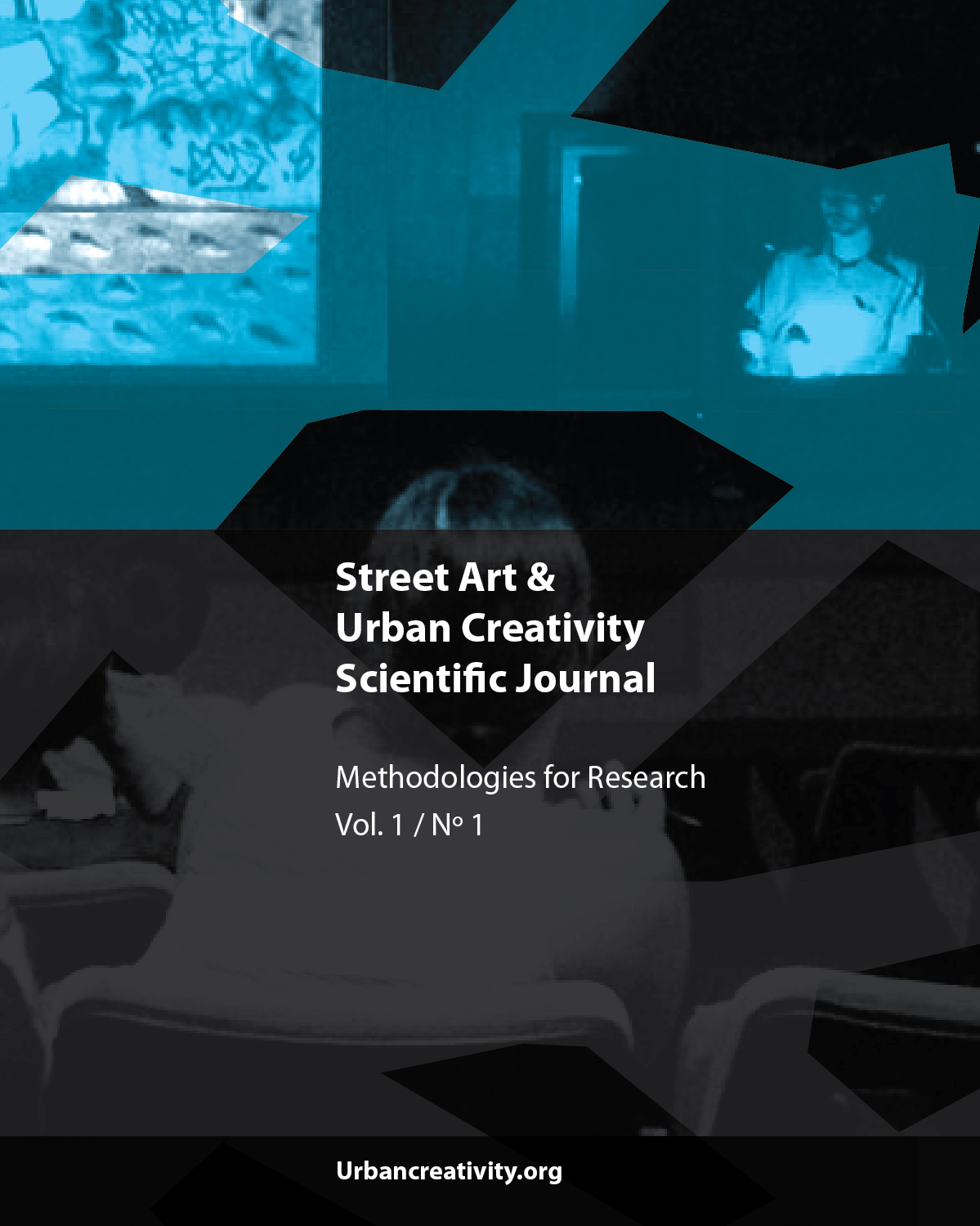“…and I want to paint it black!?”
What strategies are there to undermine the reclamation of street art for profit and support public engagement for the interests of citizens?
DOI:
https://doi.org/10.25765/sauc.v1i1.18Abstract
This working paper will unfold the methodological design of the PhD research project, Behind The Murals – A Participative Webdocu on the Motivations and the Reclamations of Street Art, with a focus on the incident when BLU repainted his murals at Berlin’s Cuvrybrache completely black. In contrast to BLU’s strategy – to erase his art so that it can no longer be made profitable by the investor of the lot or even by Berlin’s city marketing – I aim to investigate what other strategies against the reclamation of street art are imaginable. The main methodological question is, how is it possible to carry out this research in such a way that its results support the communities (potentially) affected by gentrification/touristification to gain a voice? The experimental methods of participatory video and digital storytelling will be applied with the target of producing a participative webdocu accompanied by a locally exhibited video installation.
Downloads
Global Statistics ℹ️
|
160
Views
|
41
Downloads
|
|
201
Total
|
|
Downloads
Published
How to Cite
Issue
Section
License
Copyright (c) 2015 Street Art & Urban Creativity

This work is licensed under a Creative Commons Attribution-NoDerivatives 4.0 International License.
Those authors who publish in this journal accept the following terms:
-
Authors retain copyright.
-
Authors transfer to the journal the right of first publication. The journal also owns the publishing rights.
-
All published contents are governed by an Attribution-NoDerivatives 4.0 International License.
Access the informative version and legal text of the license. By virtue of this, third parties are allowed to use what is published as long as they mention the authorship of the work and the first publication in this journal. If you transform the material, you may not distribute the modified work. -
Authors may make other independent and additional contractual arrangements for non-exclusive distribution of the version of the article published in this journal (e.g., inclusion in an institutional repository or publication in a book) as long as they clearly indicate that the work was first published in this journal.
- Authors are allowed and recommended to publish their work on the Internet (for example on institutional and personal websites), following the publication of, and referencing the journal, as this could lead to constructive exchanges and a more extensive and quick circulation of published works (see The Effect of Open Access).













